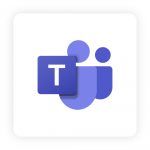The modern office doesn’t just exist between four walls anymore. It floats between browser tabs, mobile screens, cloud drives, and real-time chats. In 2025, digital workspace software isn’t supposed to be just a trend—it’s the main element of every thriving organization. These digital solutions are not only reshaping where we work but also how we work. As companies across the globe embrace flexible work, the right tools become the bridge between chaos and flow, between scattered teams and aligned goals.
In this article, we are going to explore the must-have digital workspace software of this year—tools designed not just for productivity, but for harmony, collaboration, and growth! Join me and read on….
Digital Workspace Tool Categories List
- Top Communication Platforms
- Top Productivity Tools
- Top Collaboration Tools
- Top Knowledge Management Tools
What Are Digital Workplace Tools?
At its heart, a digital workplace is the virtual extension of your physical office—a unified space where communication, collaboration, and productivity converge. The tools that power this experience are called digital workplace tools. They include everything from communication platforms and collaboration tools to project management apps and knowledge repositories.
The main purpose of digital workplace tools is to help teams work smarter, faster, and more meaningfully—no matter where they are. They foster seamless employee communication, manage workflows, store & share information, and drive innovation.
These tools don’t just support the work you do—they enhance your team’s ability to do it smarter, faster, and more meaningfully.
Looking for an all-in-one space to collaborate and manage knowledge? Give Bit.ai a try and watch your team’s workflow level up.
Top Communication Tools
Clear and instant communication is the lifeblood of any organization. Whether your team is working from home, across countries, or in a hybrid setting, these modern workplace tools help keep conversations flowing and ideas growing.
 #1. Slack
#1. Slack
Slack with organized channels for every team, integration with over 2,400 workplace apps, and real-time messaging that turns quick updates into full-blown discussions, Slack is the digital workspace where collaboration thrives. Features like Slack Connect let you collaborate with partners outside your company, while huddles and canvas tools bring async work and rich documentation into the fold.
Features
With slack each conversation can be pinned, searched, and revisited, making knowledge easily retrievable. Slack’s integration with tools like Google Drive, Zoom, Trello, and Salesforce means you can bring your entire digital workspace into one thread. Slack’s can create private channels for leadership, public ones for team bonding, or threads that streamline decision-making. Huddles offer quick audio drop-ins, while Canvas allows for richer asynchronous updates. And with customizable notifications, emojis, and even bots like Slackbot, it adds both utility and a touch of personality to every workday.
Pricing: Slack’s Free plan is great for small teams, while the Pro plan starts at $8.75/user/month. For large organizations, the Business+ plan at $15/user/month offers advanced security and compliance.
 #2. Microsoft Teams
#2. Microsoft Teams
Integrated deeply into the Microsoft 365 ecosystem, Microsoft Teams is more than a chat tool—it’s a fully-fledged digital workplace application. From instant messaging and HD video conferencing to seamless document collaboration and app integration, it simplifies your digital workspace in one secure hub. Teams shines in organizations already using Microsoft tools like Outlook, SharePoint, or OneDrive, delivering a unified communication experience.
Features
With threaded conversations, file collaboration via OneDrive, and seamless meeting scheduling via Outlook, it offers end-to-end workflow continuity. You can co-edit documents in Word, Excel, or PowerPoint right from the chat window—no switching tabs. Breakout rooms and Together Mode elevate the meeting experience, while task boards and approvals turn Teams into a project manager’s playground. It’s also a security-first platform, offering advanced compliance and enterprise-grade data protection that makes IT teams breathe easy.
Pricing: Included with Microsoft 365 Business Basic at $6/user/month and Business Standard at $12.50/user/month.
 #3. Bit.ai
#3. Bit.ai
Bit.ai enhances the way teams communicate by making documents a central space for discussion. Instead of juggling endless email threads or trying to piece together feedback from different apps, your team can leave comments right inside documents, respond in real time, and tag teammates so nothing is missed. Every message stays connected to its context, and every update lives where the work happens. With Bit, communication isn’t fleeting—it’s part of your workflow.
Features
Bit.ai with it’s @mentions provides a thoughtful, document-based environment where communication feels more intentional and is always easy to return to. Instead of searching endlessly for feedback or updates, everything lives in one place—structured, searchable, and easy to navigate. With real-time collaboration, comments embedded within documents, and intelligent tagging, Bit ensures that team conversations stay attached to the context they belong in. It’s the kind of communication that doesn’t get lost—it builds clarity over time.
Pricing: Free basic plan; Pro plan starts at $8/user/month, and Business plan at $15/user/month.
Top Productivity Tools
Productivity isn’t about being busy—it’s about being intentional. These digital workspace software solutions help teams align on goals, manage time, and move forward with clarity and confidence. In fact, studies show that 52–69% of organizations have seen significant improvements in employee productivity and efficiency after using digital workplace solutions.
 #5. Todoist
#5. Todoist
Simplicity meets power in Todoist—a productivity tool that helps teams (and individuals) turn chaos into calm. With color-coded priorities, smart labels, recurring tasks, and productivity visualizations, it’s one of the go-to tools for daily task management. It syncs across devices, integrates with calendars, and supports collaborative project boards.
Features
Add tasks with natural language input (“Follow up next Thursday”), categorize them with color-coded labels, and assign priorities with just a click. Share projects, delegate subtasks, and get notified when deadlines loom. With productivity points and task streaks, it gamifies focus in a surprisingly motivating way. Whether you’re planning a product launch or your weekly grocery run, Todoist’s filters and views make clarity a constant companion.
Pricing: Free for personal use; Pro plan at $5/month, and Business plan at $8/user/month with shared team workspaces.
 #6. Bit.ai
#6. Bit.ai
Staying productive isn’t about squeezing more into the day—it’s about removing friction. Bit.ai helps teams stay focused by organizing work into smart documents that can grow with the pace of your projects. From daily task outlines and project roadmaps to performance trackers and client deliverables, everything can be created, and shared in one place. Templates help keep your rhythm consistent, while living documents and rich-text search allow you to revisit ideas anytime. Bit doesn’t just help you get work done—it helps you understand how that work fits into the bigger picture.
With Bit you can create beautiful documents that evolve alongside your projects, embed progress visuals like tables and charts, and even use custom templates that reflect your team’s daily rhythm. With version control and smart search, Bit makes it easy to find exactly what you need—even weeks later—so your momentum never gets interrupted. It turns documentation into something that actually drives results. Then we have the smartest AI Genius with 300+ prompts! You can use Bit’s AI Genius writer to simplify your work, save time, and help you generate powerful documents and wikis faster than thought.
Pricing: Free basic plan; Pro plan starts at $8/user/month, and Business plan at $15/user/month.
 #7. Trello
#7. Trello
With its card-based design inspired by the Kanban method, Trello remains a favorite for managing workflows visually. Teams can add checklists, due dates, attachments, and automations to cards, and customize boards with Power-Ups that integrate with hundreds of apps. It’s perfect for content calendars, agile sprints, and everything in between.
Each board represents a project, each list a stage, and each card a to-do item loaded with checklists, due dates, file attachments, and comments. Power-Ups turn Trello into a powerhouse—integrate with Slack for updates, Google Calendar for timelines, or Butler for custom automation that keeps things moving. Drag cards between stages and watch your project visually progress. It’s the perfect digital workspace software for visual thinkers and agile doers.
Pricing: Free forever; Premium starts at $10/user/month, and Enterprise pricing is available based on seat count.
Top Collaboration Tools
When true collaboration takes root, organizations flourish and team productivity increases. These workplace tools are designed to foster teamwork, creativity, and transparency, no matter where your team is located.
 #8. Bit.ai
#8. Bit.ai
Bit.ai is the ultimate document collaboration platform that creates an environment where your team can co-create documents, embed rich media, and bring thoughts to life in a shared space. Whether you’re editing in real time, offering feedback, or working asynchronously, Bit ensures the process feels smooth and intuitive. Bit turns all your ideas into a shared experience.
With Bit’s workspaces whether you’re working across departments or continents, bring everyone into a shared space with real-time editing, visual embeds, and simple sharing controls. You can co-create everything from articles and reports to client proposals, all without the back-and-forth of attachments or formatting headaches. You can also use the wiki feature to build a wiki tree with your documents and have them all under one folder, or different folders for different teams within your organization! As mentioned earlier, you can also have teammates check in-line comments by simply mentioning them as @mentions. What better collab can you think of!
Pricing: Free basic plan; Pro plan starts at $8/user/month, and Business plan at $15/user/month.
 #9. Miro
#9. Miro
Miro is where visual collaboration thrives. Designed like an infinite whiteboard, Miro lets teams brainstorm, plan, and prototype together—even asynchronously. With templates for user journeys, agile workflows, and wireframes, it’s ideal for product and UX teams. Add sticky notes, diagrams, and comments to bring ideas to life.
Features
Start with a blank board or choose from hundreds of templates: wireframes, flowcharts, customer journey maps, or agile sprints. Sticky notes, shapes, and frames allow free-form brainstorming, while real-time cursors show who’s contributing where. You can embed videos, comment with emojis, and group ideas into clusters. Its collaboration features shine during workshops, retrospectives, or design sprints—especially with voting tools, timers, and integrations with tools like Jira and Asana.
Pricing: Free starter plan; Business plan at $16/user/month, and Enterprise pricing on request.
 #10. ClickUp
#10. ClickUp
ClickUp is an all-in-one digital workplace platform that unifies tasks, docs, chats, and goals. With powerful automation, dashboards, and granular permission settings, it’s equally loved by product managers, marketers, and operations leads. ClickUp replaces dozens of disconnected tools with one beautifully structured space.
Features
With Clickup, tasks, Docs, Goals, Whiteboards, Time Tracking—ClickUp bundles everything into one intuitive platform. You can create nested checklists, assign multiple assignees, automate repetitive work, and visualize projects in Gantt charts, lists, calendars, or timelines. Add docs right next to task boards, track sprints, or create dashboards for high-level reporting. It adapts to your workflow—whether you’re managing sprints, launching campaigns, or onboarding new hires—with precision and power.
Pricing: Free forever; Unlimited plan at $7/user/month, Business at $12/user/month, and custom Enterprise plans.
👉 Read 10 Best Tools and Powerful Tips for Virtual Collaboration for more information
Top Knowledge Management Tools
When knowledge is captured and shared well, organizations move faster, think smarter, and solve problems with grace. These workplace technology tools make knowledge the cornerstone of your operations.
 #11. Confluence by Atlassian
#11. Confluence by Atlassian
Confluence is your organization’s shared brain—a collaborative workspace where teams write, organize, and discuss everything from project plans to onboarding docs. Its hierarchical structure and tight Jira integration make it a favorite for engineering and product teams. Features like inline comments and permissions keep collaboration secure and focused.
Features
With Confluence you can create structured spaces for each department—Engineering, HR, Marketing—and within those, build intuitive page hierarchies for projects, policies, and documentation. Inline comments spark dialogue without clutter, and permission settings keep content secure. Dynamic macros allow you to embed Jira issues, status updates, or roadmaps directly within pages. Search is lightning-fast, and version history ensures nothing is lost. It’s more than a wiki—it’s a growing knowledge garden for your entire organization.
Pricing: Free for up to 10 users; Standard plan at $6.05/user/month, Premium at $11.55/user/month.
 #12. Guru
#12. Guru
Guru empowers your team with just-in-time knowledge. It smartly surfaces verified content in the tools your team already uses—be it Slack, Gmail, or Salesforce. Guru’s browser extension is a lifesaver, and its AI engine helps suggest updates and fill knowledge gaps automatically.
Features
Do you need the latest onboarding policy or product pitch? Guru delivers it in Slack, Chrome, or your CRM. Its verification workflow ensures that subject-matter experts keep knowledge fresh. Usage analytics show what’s resonating and what’s outdated. With AI-powered suggestions and a Chrome extension that’s always within reach, Guru turns knowledge into real-time power.
Pricing: Starter plan at $5/user/month, Builder at $10/user/month, and Expert at $20/user/month.
 #13.Bit.ai
#13.Bit.ai
Bit.ai isn’t just where your team stores information—it’s where your ideas take shape, grow, and stay accessible for everyone who needs them. Whether you’re onboarding a new team member, organizing internal processes, or pulling together client-facing content, Bit helps you keep your knowledge structured, searchable, and shareable. It feels less like filing and more like building something useful together. The best part? It doesn’t require hours of setup or technical know-how—just your content, your voice, and Bit’s beautifully minimal workspace.
Features
Bit really shines when it comes to turning scattered knowledge into something clear and collaborative. You can create smart documents with live links, code blocks, tables, and over 100+ rich embeds—from Google Docs and Airtable to YouTube videos, Loom walkthroughs, and even GitHub gists. Bit also includes readymade templates for everything from meeting notes to product roadmaps, saving you time and giving your docs a head start. And with integrations with dozens of awesome tools, Bit fits right into your workflow. You can even track engagement—see who’s viewed your docs, for how long, and when—so nothing ever gets lost in the shuffle.
Pricing: Free basic plan; Pro plan starts at $8/user/month, and Business plan at $15/user/month.
Also read 💡: Top 10 Best Knowledge Management Tools in 2025!
The Best Digital Workspace Software!
Keeping your team organized and in sync can feel like herding cats. So we have discussed all these amazing tools right so which tool do you think stands out amongst them all! DRUMROLL!!! OFCOURSE IT’S BIT.AI!!
It’s not just another tool where files go to collect digital dust. Bit is where your ideas actually come alive—whether you’re welcoming a new teammate, building out client docs, or just trying to keep internal processes from turning into chaos. You don’t need to be super tech-savvy to use it either. It’s clean, minimal, and somehow makes everything feel… easier.
The real magic? You can create these beautiful, smart docs that do way more than hold text. Think live links, code blocks, tables, and over 100 types of embeds.
Build, write, and collaborate faster with Bit’s AI Genius Writer and ready-to-use templates. No chaos, just flow. Visit the Bit Academy today to get started!
Wrapping up
The future of work isn’t coming—it’s already here. And with it, the need for smarter, more connected tools that help teams do their best work, every day. Whether it’s clear employee communication, seamless collaboration, or simply having the right information at the right time, choosing the right digital workspace software shapes how your team functions and flourishes. These tools don’t just support productivity—they help create a workplace where ideas move faster, teams feel aligned, and progress is visible. The best part? You don’t need dozens of apps—just the right ones that work in harmony with your team’s goals. Build your digital workplace with intention, and let technology do what it does best: make work feel a little more effortless. Adios!
FAQs
1. What is digital workspace software, and why is it important for modern teams?
Digital workspace software refers to platforms that support communication, collaboration, task management, and knowledge sharing in a unified virtual environment. It’s essential because it empowers distributed teams to work efficiently, stay connected, and focus on meaningful goals regardless of location or time zone.
2. How do I choose the right workplace tools for my organization?
Start by identifying your team’s unique needs: Do you prioritize real-time messaging, visual collaboration, or structured documentation? From there, consider tools that integrate well with your current tech stack and can scale with your team’s growth.
3. What’s the difference between digital workplace platforms and communication tools?
A communication tool (like Slack or Zoom) focuses specifically on messaging or meetings, while a digital workplace platform (like Bit.ai) offers a broader ecosystem—combining documents and collaboration—within a single workspace.
4. Are these tools suitable for small businesses or just large enterprises?
These tools are highly adaptable. Platforms like Trello, and Todoist are ideal for startups and small teams due to their simplicity and affordability, while enterprise-level tools like Microsoft Teams or Confluence offer the scalability and security larger organizations require.
Keep Reading & Learning
- Workplace Productivity: Definition, Importance, Tools & More!
- Productivity Plan: What is it & How to Create a Perfect One?
- Virtual Workspace: 9 Tools to Work Digitally With Team!
- What is Digital Workplace and It’s Impact on the Future of Remote Work
- 9+ Benefits of Collaboration For Teams and Businesses!



